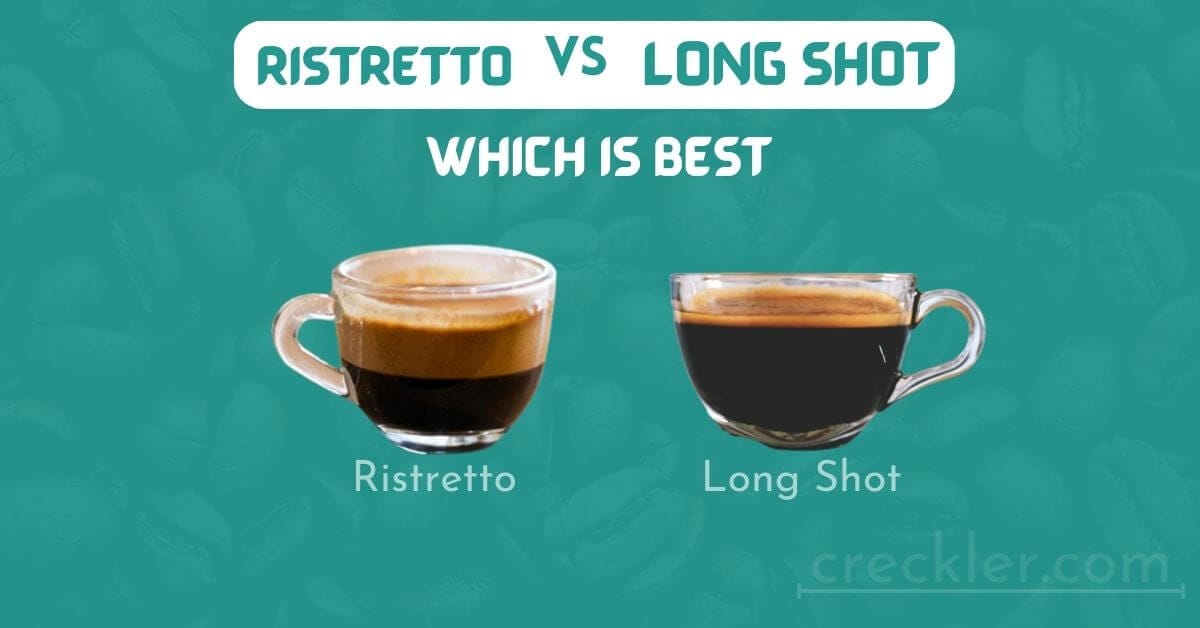
What is a Long Shot Espresso? Unveiling the Secrets of This Intense Coffee Brew
For coffee aficionados, the world of espresso is a realm of nuanced flavors, brewing techniques, and passionate debate. Among the many espresso variations, the “long shot” stands out as a particularly intriguing and potent offering. But what exactly *is* a long shot espresso, and what distinguishes it from its more common counterparts? This article delves into the world of the long shot, exploring its definition, preparation, characteristics, and place in the coffee landscape.
The term “long shot espresso” refers to a specific method of pulling an espresso shot. Unlike a traditional espresso shot, which uses a relatively short extraction time, a long shot espresso is extracted for a longer duration. This extended extraction process results in a shot that is larger in volume and often boasts a more pronounced flavor profile. The increased contact time between hot water and the coffee grounds is the key to unlocking the long shot’s unique qualities. We’ll explore the specifics of this process shortly.
Defining the Long Shot: Beyond the Basics
At its core, a long shot espresso is defined by its extended extraction time. While a standard espresso shot typically extracts for around 25-30 seconds, a long shot can take anywhere from 40 to 60 seconds, or even longer, depending on the barista’s preference and the equipment being used. This extended extraction allows for a greater degree of solubilization of the coffee grounds, leading to a more complex and potentially more intense flavor profile. This is a crucial aspect differentiating a long shot espresso from a standard shot.
The extended extraction also affects the volume of the shot. Because the water is in contact with the coffee grounds for a longer period, a long shot espresso generally produces a larger volume of liquid than a traditional shot. This can be a significant factor for those who enjoy a more diluted espresso experience or want to use the shot as a base for other coffee drinks. This is a key characteristic when considering “what is a long shot espresso”.
The Science of Extraction: How a Long Shot Differs
To understand the nuances of a long shot espresso, it’s helpful to understand the science of espresso extraction. The extraction process involves forcing hot water through finely ground coffee beans under high pressure. This process dissolves the soluble compounds within the coffee, including acids, sugars, and oils, which contribute to the flavor, aroma, and body of the final brew.
In a traditional espresso shot, the extraction is carefully calibrated to achieve a balance of these compounds. With a long shot espresso, the extended extraction time pulls out a wider range of compounds. This often includes more of the bitter compounds, as well as a greater concentration of the desirable flavor elements, depending on the coffee beans and the brewing parameters. The water temperature, pressure, and grind size are all carefully controlled.
The longer extraction time also results in a higher TDS (Total Dissolved Solids) concentration in the shot. This means that a greater percentage of the coffee grounds are dissolved into the water, creating a more concentrated and potentially more intense flavor. This is a key consideration when learning “what is a long shot espresso”.
Brewing a Long Shot: A Step-by-Step Guide
Brewing a long shot espresso requires a slightly different approach than a standard espresso. Here’s a general overview of the process:
- Grind the Coffee: Start with freshly roasted coffee beans and grind them to a fine consistency, similar to that used for standard espresso. Experiment with grind size to find the optimal extraction for your equipment and beans.
- Dose the Portafilter: Dose the portafilter with the appropriate amount of ground coffee. This typically ranges from 18 to 21 grams, but this depends on the basket size.
- Tamp the Coffee: Tamp the coffee grounds firmly and evenly in the portafilter. This creates a compact and consistent puck of coffee.
- Preheat the Machine: Ensure your espresso machine is properly preheated to the correct temperature.
- Start the Extraction: Insert the portafilter into the group head and start the extraction. The key here is to allow the extraction to run for a longer period than usual, aiming for a total extraction time of 40-60 seconds, or even longer, depending on the desired outcome.
- Monitor the Flow: Watch the flow of espresso carefully. The stream should start slowly, then become a steady, consistent flow. Adjust the grind size if necessary to achieve the desired flow rate.
- Observe the Color: The color of the espresso should evolve during the extraction. The early stages may have a darker, more concentrated appearance. As the extraction progresses, the color will often lighten.
- Taste and Adjust: Taste the espresso and make adjustments as needed. If the shot is too bitter, try shortening the extraction time or using a coarser grind. If it’s too sour, try extending the extraction time or using a finer grind.
Flavor Profile: What to Expect from a Long Shot
The flavor profile of a long shot espresso can vary significantly depending on the coffee beans, the brewing parameters, and the barista’s skill. However, some general characteristics are commonly associated with this brewing method. This is an important factor in understanding “what is a long shot espresso”.
Intensity: A long shot espresso is often more intense than a standard espresso, with a more pronounced flavor. This is due to the higher concentration of dissolved solids.
Bitterness: Because of the extended extraction, long shots can sometimes exhibit a higher degree of bitterness. This is particularly true if the extraction time is excessively long, or if the coffee beans are over-extracted. Careful attention to grind size and extraction time is essential to mitigate this.
Complexity: The extended extraction can also bring out a greater complexity of flavors. More of the nuanced flavor notes in the coffee beans are often extracted, leading to a richer and more layered taste experience.
Body: A long shot espresso typically has a fuller body than a standard shot. This contributes to a more satisfying mouthfeel.
Acidity: The acidity can vary. Some long shots may have a reduced acidity, while others may retain a bright acidity, depending on the beans and the extraction process. The specific characteristics also depend on the beans.
Coffee Beans and the Long Shot
The choice of coffee beans is crucial when brewing a long shot espresso. The characteristics of the beans will greatly influence the final flavor profile. Generally, beans with a balanced flavor profile and a good level of sweetness are well-suited for long shots. Beans with a high acidity may become overly sour with an extended extraction, while beans with a very dark roast may become excessively bitter.
Experimentation is key. Try different bean varietals, roasts, and origins to discover which beans produce the best results with your equipment and brewing preferences. The roast level, origin, and processing method all play a role.
Long Shot vs. Other Espresso Variations
It’s helpful to compare the long shot espresso to other espresso variations to better understand its place in the coffee world. This comparison helps illuminate “what is a long shot espresso” in context.
Standard Espresso: As mentioned earlier, a standard espresso is extracted for a shorter duration (around 25-30 seconds), resulting in a more concentrated and potentially less complex flavor profile. The long shot espresso, with its extended extraction, allows for a wider range of flavors to be pulled from the coffee grounds.
Ristretto: A ristretto is the opposite of a long shot. It’s a shorter extraction, typically pulled for around 15-20 seconds. This results in a more concentrated and sweeter shot, with a more intense flavor. The ristretto is often favored for its bold and concentrated flavor.
Lungo: A lungo is a longer extraction than a standard espresso, but not as long as a long shot espresso. It’s typically pulled for around 30-45 seconds. The term “lungo” means “long” in Italian. The lungo will have a more bitter taste compared to the ristretto.
The Long Shot in Coffee Drinks
Due to its larger volume and more intense flavor, a long shot espresso can be used as the base for a variety of coffee drinks. It’s particularly well-suited for drinks where a more pronounced coffee flavor is desired, such as:
- Americano: The long shot espresso can be added to hot water to create a more robust Americano.
- Latte: The long shot espresso can provide a more intense coffee flavor in a latte, cutting through the sweetness of the milk.
- Cappuccino: The more intense flavor of a long shot espresso can balance the milk and foam in a cappuccino.
- Iced Coffee: The long shot espresso can be used to create a more flavorful iced coffee, especially when using it as a base in an iced latte.
Conclusion: The Allure of the Long Shot
The long shot espresso offers a unique and compelling coffee experience for those seeking a more intense and complex flavor profile. By understanding the science of extraction and the nuances of brewing a long shot, coffee enthusiasts can unlock a world of flavor possibilities. Whether you’re a seasoned barista or a home coffee enthusiast, exploring the world of the long shot espresso is a worthwhile endeavor. It offers a deeper understanding of coffee extraction and the subtle art of brewing a perfect cup. The longer extraction process is key to understanding “what is a long shot espresso”.
[See also: Best Espresso Machines for Beginners]
[See also: Coffee Grinder Guide: Choosing the Right One]
[See also: Espresso vs. Coffee: What’s the Difference?]


